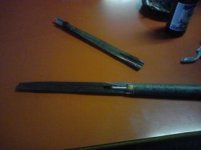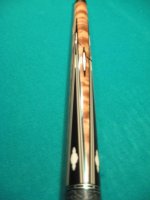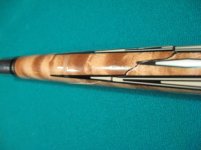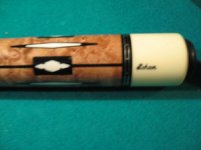a guy at league had a cue split in half from the wrap to the joint. i never saw one do that before.
i asked him if he broke with it and he said no.i did not know some cues were made with a pin holding the handle to the fore arm. i mean the fore arm split right in half. wow !
it was a russ espirito cue btw. i took a couple of crappy pics with my phone. lemme try to figure out how to up load them tomorrow.
i do have a team mate that breaks and shoots with a predator. its amazing he has not broke his shaft yet.
i asked him if he broke with it and he said no.i did not know some cues were made with a pin holding the handle to the fore arm. i mean the fore arm split right in half. wow !
it was a russ espirito cue btw. i took a couple of crappy pics with my phone. lemme try to figure out how to up load them tomorrow.
i do have a team mate that breaks and shoots with a predator. its amazing he has not broke his shaft yet.




